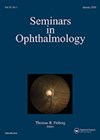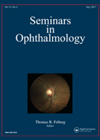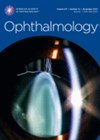You searched for "biometry"
ESCRS 2023: Heidelberg Engineering: Mastering Vision Precision: Enhancing IOL Power Prediction with High-Resolution Anterior Segment Imaging
10 September 2023
Mastering Vision Precision: Enhancing IOL Power Prediction with High-Resolution Anterior Segment Imaging
Biometric changes in phakic eyes over time
3 June 2021
| Su Young
|
EYE - Cataract, EYE - Refractive
|
Biometry, anatomy, cataract surgery, management, surgical planning
This was a single-centre retrospective cohort study of patients who attended a ‘two-stop’ preassessment clinic for consideration of cataract surgery between November 2002 and March 2015. Four biometric measurements were recorded: axial length, horizontal (K1) readings, vertical (K2) readings and...
Biomechanical stabilisation of ocular measurements post cataract surgery
This prospective study looks into the time duration of biomechanical stabilisation post uneventful cataract surgery in a case series of 62 consecutive eyes in patients with no ocular or systemic comorbidity. The patients were followed-up at fixed intervals of one...Daybreak Medical: Ophthalmic Ultrasound Seminar 2 Day Course "From Theory to Practice"
30 April 2025
-1 May 2025
Course ProgrammeDay One:-Registration and Welcome-Introduction: applied Basics and Principles-B-Scan: How to Perform and Obtain the Best Images-Standardised A-Scan: Guest Speaker-Biometry: A-Scan, B-Scan and IOL Calculations-Opaque Media/Dense Cataracts-Vitreoretinal Disorders and Trauma-Hands on Training with Real Patients and Biometry Workshop Day Two:-Ultrasound...
Haag-Streit Academy announces course schedule for 2025
21 November 2024
|
Company Profiles, Research & Development
Haag-Streit Academy are pleased to announce their course schedule for 2025, which features eight slit lamp and biometry courses in prime locations across the UK. The courses offer attendees the vital skills and knowledge to utilise their slit lamp and...
Cybersight: Improved Perioperative Management of Cataract Surgery Using OCT Technology Virtual Session
12 April 2024
During this live webinar, we will describe the principles and functionality of OCT technology in perioperative management of cataract surgery. Case demonstrations will highlight the use of OCT before and after cataract surgery. Additionally, the use of the latest anterior...
Ophthalmic Imaging: From Theory to current practice
4 October 2024
Welcome to the 14th edition of the Ophthalmic Imaging Congress. This event, focused on Imaging and all its applications in ophthalmology, will allow us to reflect on the technological advances and the progress we have made. Program: - Theoretical Sessions:...
The results of the last survey Jun21
Thank you so much again for participating in the survey. I have been asked to give several talks at regional teaching sessions about some of the issues I discuss in these articles and I am happy to continue to do...The importance of ‘hands-on’ learning
1 April 2014
| Gill Wood
|
EYE - General
Providing ongoing professional education and development for the allied professions out of the clinic or hospital setting is often quite challenging. The reorganisation of rotas, heavy clinic lists and financial constraints all add up to making the opportunity to learn...
Haag-Streit UK look forward to exhibiting at 100% Ophthalmology 2024
19 January 2024
|
Awards, Conferences & Anniversaries, Company Profiles
Haag-Streit UK (HS-UK), the leading manufacturer and distributor of gold-standard diagnostic and surgical devices and instruments for ophthalmologists, optometrists, and orthoptists, is pleased to announce it will be exhibiting at 100% Ophthalmology in February 2024.







